AUSTRALIA
History
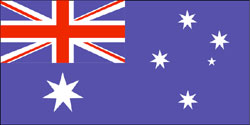
History
Cities in AUSTRALIA
| Adelaide | Brisbane | Canberra |
| Melbourne | Sydney |
History
Aborigines first inhabitants, Dutch and English
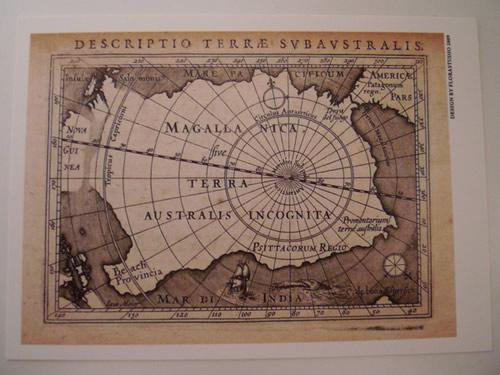
The first groups of people arrived on the Australian continent between 70,000 and 40,000 years ago. The current aborigines were the first people to populate the Australian continent. They spread through their nomadic way of life all over Australia and the offshore islands, including Tasmania. By the time the Europeans arrived, an estimated 250,000 to 300,000 Aborigines lived on the gigantic continent.
During the 16th century, the first attempts were made to find the "Terrae Australis Incognitae", the "unknown Southland". Because the earth was thought to be flat, there had to be a country in the south that balanced the earth. The Portuguese and Spaniards were the first to search. The Portuguese Mendez was the first to see Australia in 1522, but he did not go ashore.
The Dutch, on the other hand, went much further. Willem Jansz. with his ship "Duyfken" discovered the Cape York Peninsula in 1606, Dirk Hartog sailed along the barren west coast and in 1628 Frans Thijssen accidentally ended up at the Nuyts Archipelago under present-day South Australia. The inhospitable interior meant that people did not investigate further. Abel tasman was commissioned in 1642 by the United East India Company (VOC) to map the Australian coast. On his maiden voyage he mapped the south coast of the island of Tasmania (then: Van Diemenland) and a few years later he sailed from Carpentaria to the Nuyts Archipelago. At that time, the VOC did not have the money or manpower to colonize Australia and therefore they did not go ashore.
The first to set foot ashore was the buccaneer William Dampier with his ship the Roebuck. However, due to his negative stories upon returning home, the British's interest in Australia quickly declined. Only a hundred years later, Captain James Cook was ordered by the Admiralty of England to claim a large portion of the "Great South Country".
On April 29, 1770, Cook sailed with the ship Endeavor into Botany Bay, declaring everything east of the 135th parallel to British territory. The area somewhat similar to Wales was called New South Wales by Cook. The botanist Joseph Banks had gone with Cook and was very enthusiastic about the flora and fauna found and about the interior, which he thought was very suitable for colonization.
Australia becomes a penal colony
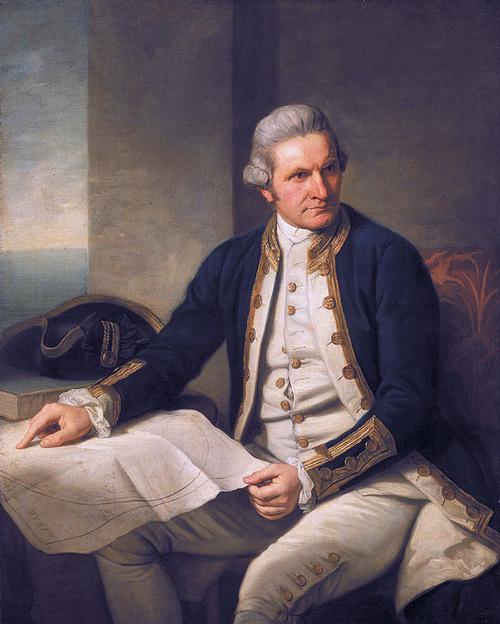
The British government decided to colonize Australia because of the positive stories and reports from Cook and Banks. Initially, Australia was considered suitable as a penal colony only after America had fallen off after the struggle for independence. Penalties for criminals were often converted into exile to penal colonies by overcrowded British prisons at the time. Australia was of course ideally suited for this due to its remote location.
On May 13, 1787, the first eleven ships departed for Australia with about 600 sailors and soldiers and 568 male criminals, 191 women and 13 children on board. On January 26, 1788, the British flag was raised in what is now called Port Jackson and Captain Arthur Philip became the first governor of the new British colony. In the early years, hostile aborigines and the lack of food were a major problem. Therefore, ex-prisoners were taken to a new penal colony: Norfolk Island. The ex-prisoners were supposed to cultivate the land and that forced laborers would help them, but things turned out differently. Members of the New South Wales Corps were given the task of ensuring that everything ran smoothly. They were the replacement for the military. However, this corps soon engaged only in a lucrative beverage business led by John Macarthur, which however got completely out of hand.
Governor Bligh (known for the mutiny on the Bounty) failed to put an end to this situation and was succeeded by Lachlan Macquarie in 1810. He sent the New South Wales Corps (Macarthur had previously returned to Britain) back to England and attempted to create a New South Wales model colony by attracting more free settlers. Inmates were also offered good jobs and attempts were made to live in peace with the aborigines. This Macquarie, a real folk figure, was later even called "Father of Australia", but was of course not so popular with the wealthy settlers. They tried to put Macquarie in a bad light at the government in London, including through John Macarthur who was back in Australia. Lord Brisbane eventually took over from Macquarie in 1821.
A few years later, the British suspected that the French would lay a claim on Western Australia after Indonesian Java had already fallen into the hands of the French. To prevent this, the British flag was raised in Albany in 1826 and in 1829 Western Australia was declared British territory by Captain Charles Fremantle and placed under military rule. In the wake of explorers like Charles Sturt and Hamilton Hume, more and more free settlers gradually came to Australia. Because everyone could become a landowner without much problems, there was a great shortage of (land) workers and that is why the least dangerous forced laborers were deployed. Later, this problem was solved by increasing the price of the land, so that not everyone could afford the purchase of land.
Australia colony of Great Britain
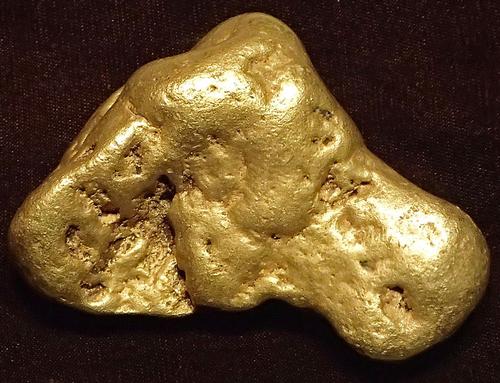 Australia GoldPhoto: James St. John CC 2.0 Generic no changes made
Australia GoldPhoto: James St. John CC 2.0 Generic no changes made
Of great significance to Australia's rise was the mid-19th century discovery of gold. This attracted many adventurers and thousands of immigrants to Australia every week. In the meantime, people in Britain became convinced that sending more forced laborers to Australia was not a good thing. It was decided to send only petty criminals to Australia.
The colonists lived on sheep and grain farming. Other colonies were established in Western Australia, South Australia, Victoria, Queensland and the Northern Territory; however, these colonies were founded by private individuals, out of direct interference from the British government. The military administration was first replaced in New South Wales by a civil administration with a people's representation. In 1850, all states were invited to draft a constitution.
In Australia itself, there were also more and more opponents against the prisoner transports and therefore the Australian League for the Abolition of Transporation was founded in 1851, after which in 1853 Great Britain indeed stopped sending forced laborers to Eastern Australia. For Western Australia, the abolition lasted until 1868 due to a major labor shortage. From the end of the 19th century, the aim was to house the individual Australian colonies in a federation to promote the economy. It would also be better to arm themselves against foreign influences and interference. A pan-Australian ministerial conference in 1891 was not yet successful, but a second in 1897 resulted in a draft constitution, which was approved in 1900 by the British parliament, which still accorded the states a great deal of independence.
Commonwealth of Australia
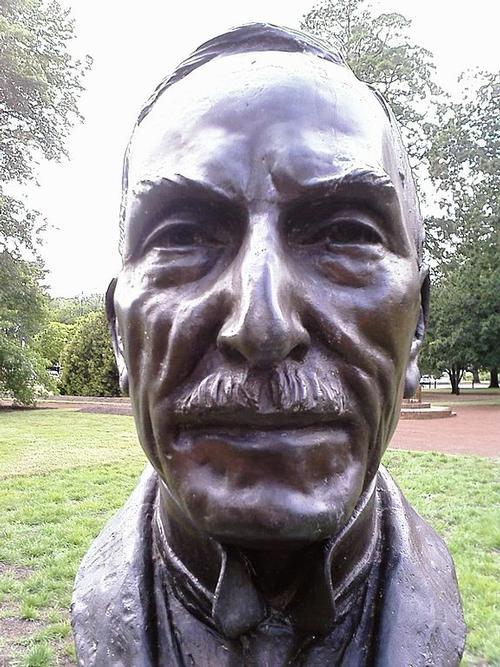
On January 1, 1901, there was sufficient support for the plan to form a federation and the Commonwealth of Australia was proclaimed. The first Australian Parliament opened in Sydney on 9 May 1901.
At the same time, the Restriction Bill was passed to limit the influx of non-European immigrants. Testing potential Asian and Polynesian immigrants in English made this called the "White Australia" policy. Of course, these people didn't have a chance because they didn't speak English! Aborigines also suffered a lot from this law and did not even get voting rights until 1967. As a result of agreements between Britain and Australia, the Australians were forced to participate in the First World War. Australian and New Zealand soldiers were also deployed at the Battle of Gallipoli. After months of fighting and many casualties, the Allies had to surrender to the Turks, who had sided with Germany.
From 1910 the Labor Party was in power with the striking W.H. Hughes as prime minister. Because he was not allowed to enter conscription in 1917, he separated from his party and founded the National Party together with the liberals. The controversial Hughes made a big impression on the Australians in 1919 by winning the mandate on German New Guinea at the Versailles Peace Conference. Under the successor to Hughes, S.M. Bruce, the new capital Canberra was inaugurated in 1927.
The global economic depression in the 1930s also hit hard in Australia, causing many people to lose their jobs and bitter poverty, but there was also a great need for a national government. Led by J.A. Lyons the United Australian party, the result of a merger between dissatisfied socialists and the National party, won a majority government that stayed on for almost ten years. After a number of years, the economy started to improve again and activity increased again.
WWII
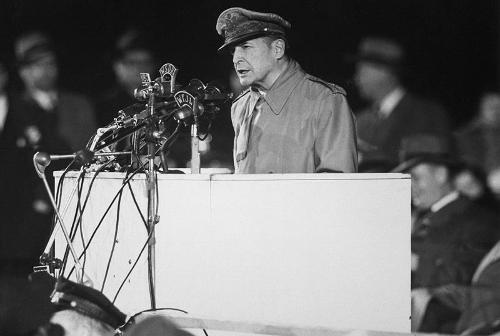 MacArthur AustraliaPhoto: Public domain
MacArthur AustraliaPhoto: Public domain
It was also realized that Australia was relatively militarily vulnerable due to its isolated location and that is why in the 1930s they started to focus on armaments and arms manufacture. Also at the beginning of World War II, Australia offered to come to the aid of the Allies in Europe, but after the Japanese attacked Pearl Harbor they were directly involved in the war.
With the fall of Singapore, the Australian army also suffered heavy losses and the entire British defense system for the southwestern Pacific collapsed. The Japanese landed on New Guinea and quickly advanced to the south coast of this island, after which the fleet base Darwin and other places on the north coast of Australia were constantly bombed. Fearing an invasion of this scarcely populated part of Australia, a close connection was sought with the strategy of the American High Command, which saw Australia as the starting point of a future counter-action. General MacArthur established his headquarters there and American troops landed on Australian soil.
Meanwhile, all Australian troops from the Middle East were recalled, military and civilian conscription was enacted, and various powers of the individual states were transferred to the federal government. Simultaneous action in New Guinea, where Australian and American troops slowly pushed back the enemy, and in the Solomon Islands halted the Japanese advance. Shortly thereafter, the attack could be started, so that Australia could breathe more broadly by the end of 1942. The election results of August 1943 greatly improved the government's position in parliament.
Australia after World War II in calm waters
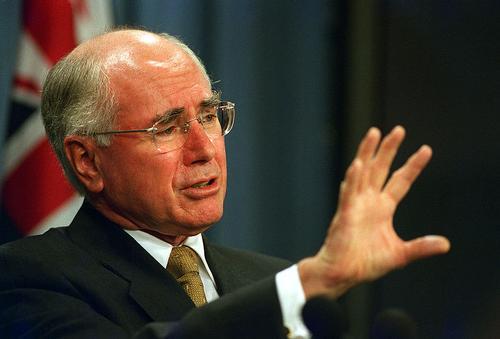
In the September 1946 elections, the government remained in power with a somewhat smaller majority. In the December 1949 elections, the opposition of Liberals under Robert Menzies and the Country Party under Fadden won. Menzies would steadily lead Australia in a changing world for the next sixteen years. The right-wing liberal majority remained in power until 1972.
In foreign policy, Australia remained loyal to the Commonwealth, but it was not blind to England's increasing weakening, and Australia's security was increasingly sought after by the United States. In the second half of the 1950s, cooperation was sought with the Netherlands in the development of New Guinea, the east of which was controlled by Australia and the west by the Netherlands. However, in 1962, when a war between the Netherlands and Indonesia over western New Guinea was imminent, Australia withheld the Netherlands' support.
In 1972, the Labor Party led by E. Gough Whitlam won the House of Representatives elections. During this period, a more neutral and foreign policy aimed at the Third World and Asia was pursued.
Australian New Guinea gained independence in September 1975 and became Papua New Guinea.
In November 1975, economic and political problems led to a crisis, which ended with the Governor General sacking Whitlam. Elections were won by the liberals and their party leader Malcolm Fraser became prime minister. His economic policies led to a number of strike actions, including the first general strike in Australian history on July 12, 1976. His foreign policy focused strongly on the West. Fraser ruled until 1983, and elections that same year were won by the Labor party led by Robert Hawke. The Hawke administration was pursuing an economic recovery through income and price policies. However, the economic problems continued and the government's popularity declined rapidly. Hawke was lucky, however, that the united opposition fell apart and he could confidently call early elections, won by the Labor party. However, the economic situation remained poor, which is partly why Prime Minister Hawke was overturned and succeeded by his Deputy Prime Minister Paul Keating. Keating harassed Britain in the early 1990s through some very undiplomatic statements and a disrespectful attitude toward Australia-visiting Queen Elizabeth.
In June 1992, the Aborigines were officially recognized as the first inhabitants of Australia, and in June 1993, the government announced plans regarding Aboriginal rights on certain property.
The March 1996 parliamentary elections ended in heavy defeat for Prime Minister Paul Keating's Labor Party. The largest party now became the Liberal Party of John Howard, who, after thirteen years of Labor rule, formed a coalition cabinet with the National Party. Keating's policy had focused on liberalizing the economy and on a greater rapprochement with Asia. Howard continued that policy, but also strengthened ties with the United States. In the October 2004 elections, the Liberal Party's ruling coalition of Prime Minister Howard and the Nationals of then Deputy Prime Minister Anderson gained an unexpected big win. Although a neck-and-neck race with opposition Labor was expected, the coalition government further increased the number of seats in the House of Representatives. Moreover, the coalition now also obtained an absolute majority in the Senate. It is the first time in 20 years that the government has an absolute majority in both chambers and Prime Minister Howard conquered his fourth consecutive term as head of government. Anderson has since been succeeded as Deputy Prime Minister and National Party Leader by Mark Vaile. Labor leader Mark Latham resigned after the election defeat and was succeeded by Kim Beazly. In November 2007, Labor won unexpected the election, Kevin Rudd came to power. In December he signs the Kyoto treaty on climate control. In February 2008, the government apologized to the original population, and in July 2008 the Labor government broke off detaining asylum seekers until their case was heard. In September 2008, Quentin Bryce becomes Australia's first woman governor general. In May 2009 Australia modernizes and strengthens its navy and air force.
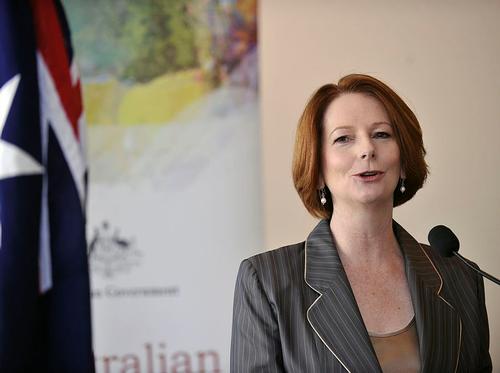
Julia Gillard becomes Prime Minister in June 2010. Parliamentary elections were held in August 2010. The result is unclear. Prime Minister Gillard thinks she has the right to open negotiations with the remaining candidates because her party seems to be getting 50.7 percent of the vote for now, against 49.3 for the opposition. It all depends on the support of a number of independent candidates.
In September 2010, Australian Prime Minister Julia Gillard can form a government. Thanks to the support pledged by two independent MPs, the Labor Leader can count on 76 seats in parliament. The opposition has 74.
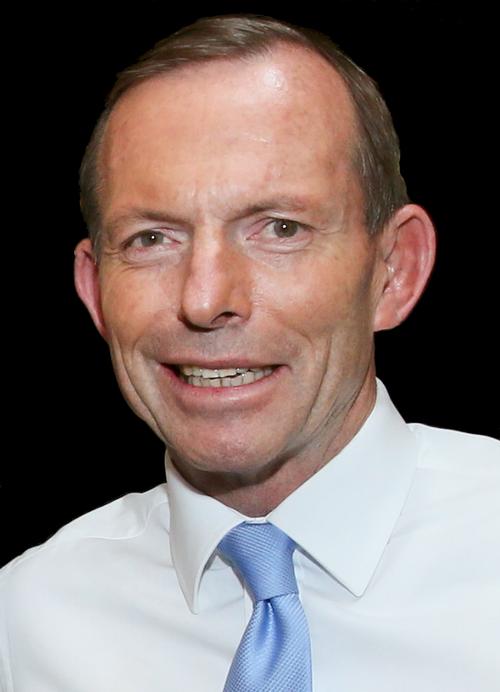 Australia Tony AbbottPhoto: Public domain
Australia Tony AbbottPhoto: Public domain
In elections in 2013, the liberal party led by Tony Abbott wins the elections, he is sworn in as the new prime minister in September. In April 2014, the Duke and Duchess of Cambridge visited Australia. In the same month, Japan and Australia enter into a trade agreement. In 2014 and 2015, Australia will take anti-terrorism measures, such as making it possible to store telephone data for longer. In September 2015, there is a change of leadership at the Liberal party and communications minister Malcolm Turnbull becomes the new prime minister. Early elections will be held in July 2016 after Senate rejection of government proposals, Turnbull's coalition narrowly wins. In December 2017, parliament approved same-sex marriage. In August 2018 Malcolm Turnbull steps aside after an unsuccessful right-wing challenge to his leadership, allowing the conservative but pragmatic finance minister Scott Morrison to take over as prime minister and Liberal Party leader. Scott Morrison leads the Liberal/National coalition to a majority in parliamentary elections in may 2019. In 2020 unprecedented heatwave causes bushfires that kill at least 25 people and millions of animals, and destroy about 2,000 homes in south-east of country.
Sources
Australië
Cambium
Blutstein, H. / Insider's guide Australië
Kümmerley & Frey
Dolce, L. / Australia
Chelsea House Publishers
Elder, B. / Australië
Van Reemst
Ivory, M. / Australië
Van Reemst
Jansen van Galen, B. / Reishandboek Australië
Elmar
Viedebantt, K. / Australië
Van Reemst
CIA - World Factbook
BBC - Country Profiles
Last updated December 2025Copyright: Team The World of Info